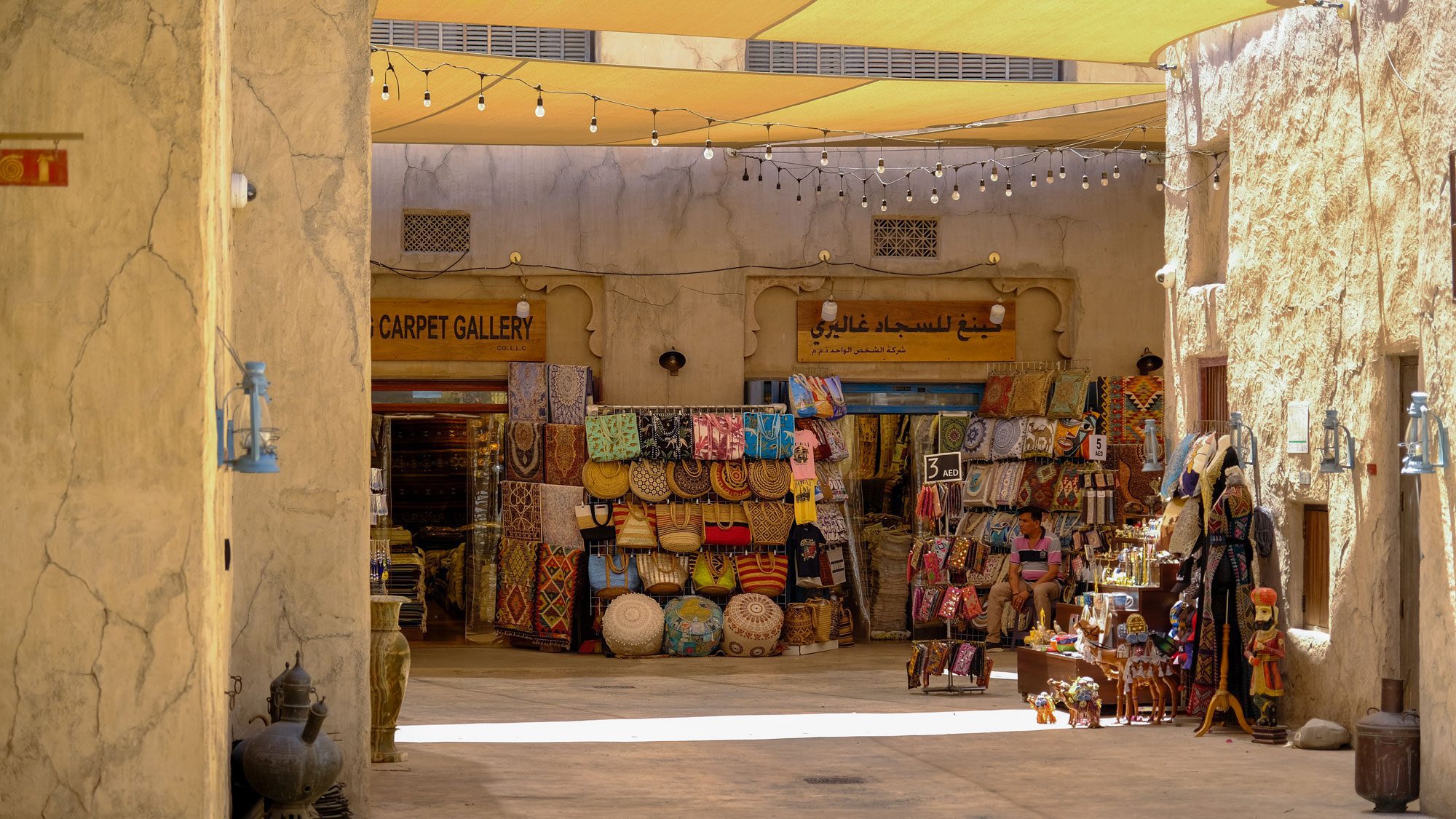
Layers of Dubai: More Than Just Luxury
Dubai surprised me. I came for the glam, but left with a deeper appreciation for its culture, contrasts, and quiet moments between the skyscrapers.
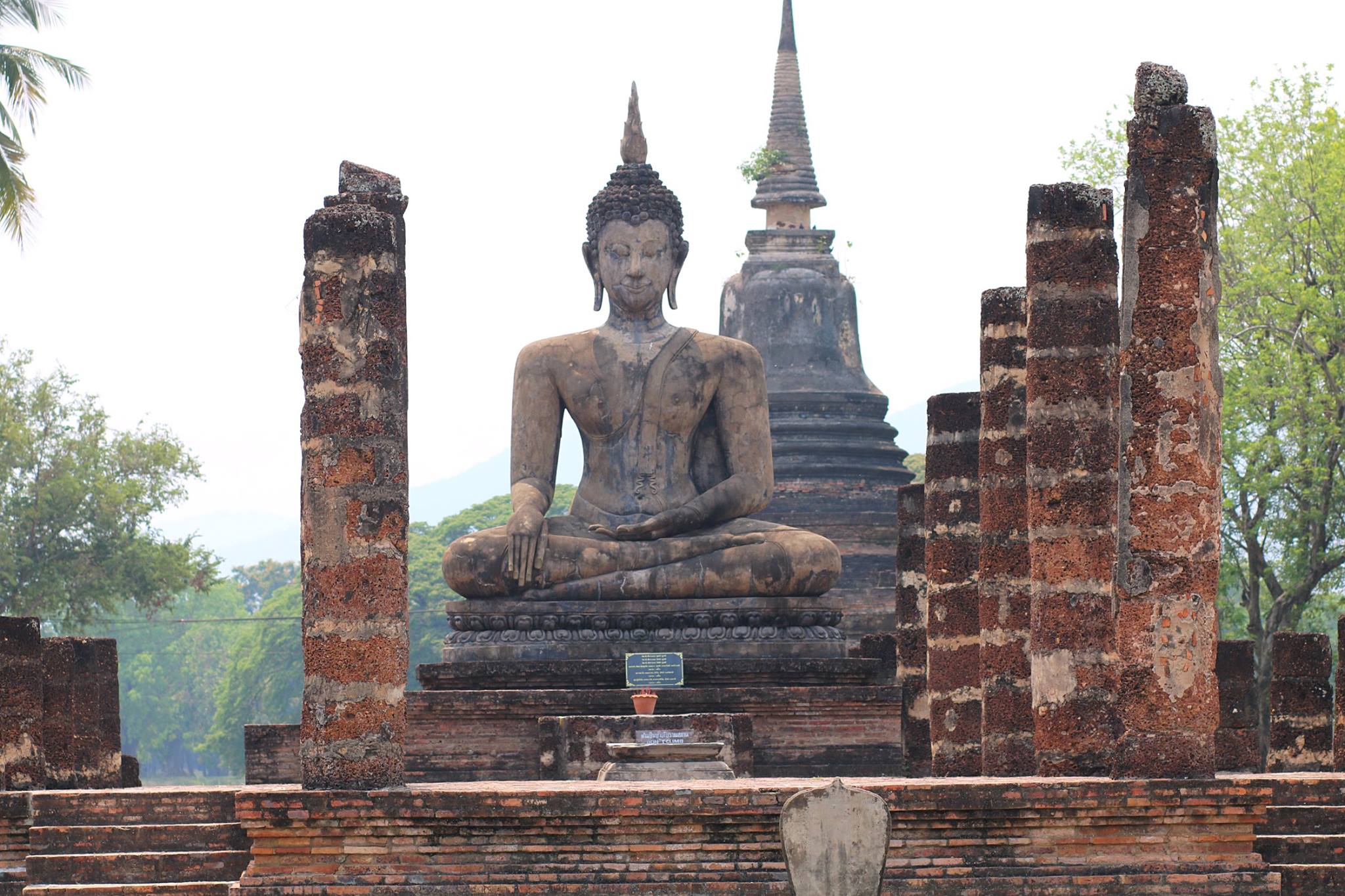
I continued my first-ever solo journey by diving headfirst into a country known for its hospitality, deep spirituality, and living history. This wasn’t just a vacation—it was a trip that made me slow down, reflect, and eat some of the best street food of my life. From royal palaces and temple ruins to sacred elephants and spontaneous tuk-tuk rides, every moment had its meaning.
Thailand really earns its nickname as the Land of Smiles. Here’s how my journey unfolded.
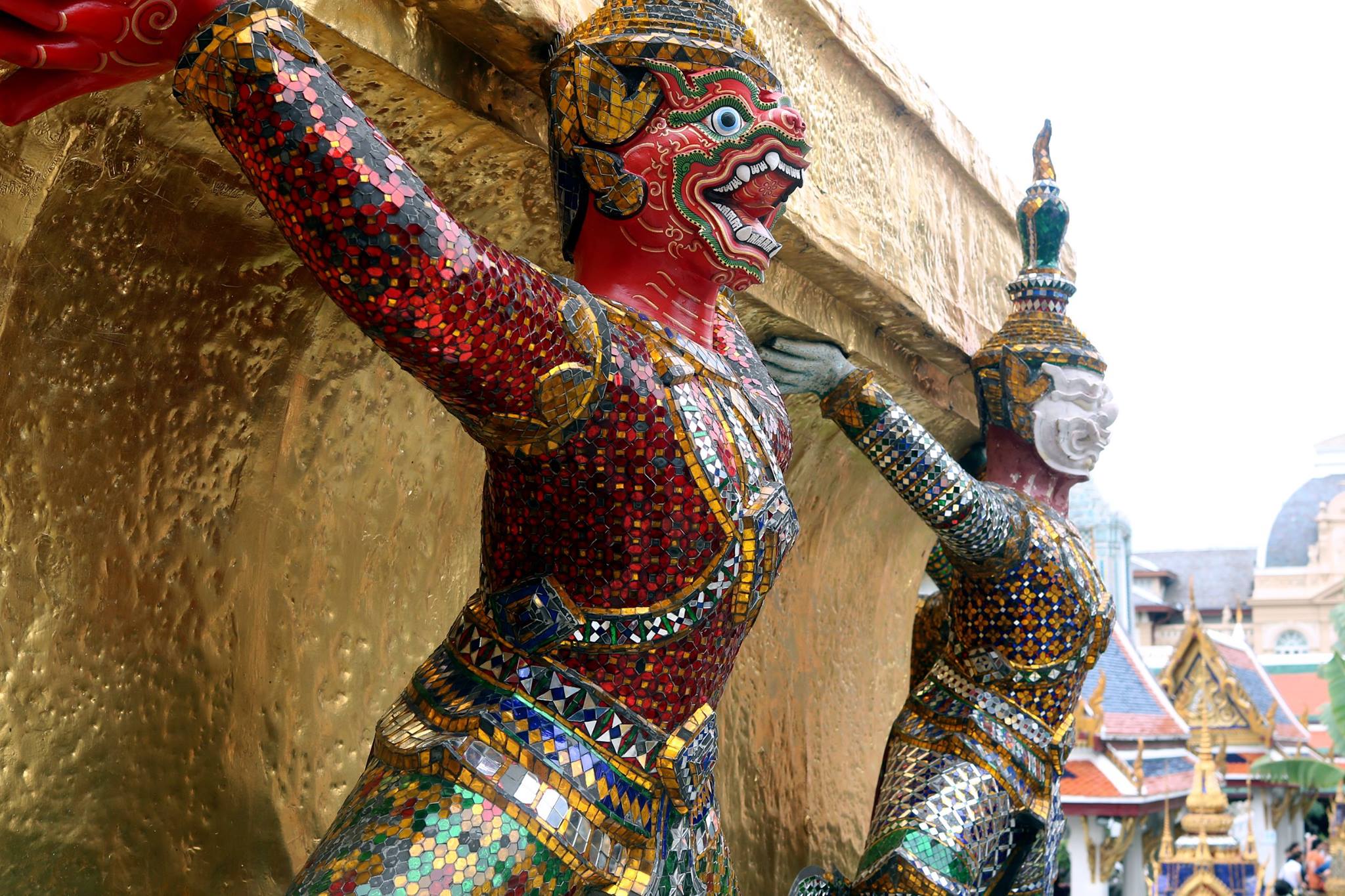
I started in Bangkok, Thailand’s sprawling capital that somehow balances the chaos of traffic with the calm of Buddhist ritual. My first stop was the Grand Palace, the historic royal residence built in 1782 by King Rama I. Though no longer the primary home of the monarchy, the palace still holds immense cultural significance. Inside its gleaming walls is the Temple of the Emerald Buddha (Wat Phra Kaew), one of the most sacred sites in Thailand.
Before even entering, I noticed how spiritual symbolism surrounded me—spirit houses tucked into street corners and public buildings, elaborate floral garlands hanging from taxi mirrors and storefronts, and portraits of the late King Bhumibol Adulyadej, who passed in 2016, still displayed as a sign of reverence. Many locals still wore black during my visit, a visual expression of national mourning.
As part of Thai temple etiquette, I had to remove my shoes and dress modestly. My traditional “feet photo” this time showed me barefoot at the Grand Palace—part tradition, part respect.
Later, I visited Wat Pho, home of the famous Reclining Buddha and known as Thailand’s oldest public education center. Its murals tell stories of Buddhist teachings and daily life, especially monastic life. Wat Pho is also a birthplace of traditional Thai massage—another layer of cultural depth I wasn’t expecting.
Of course, not all first impressions were spiritual. I almost got caught in a common tuk-tuk scam—one that reroutes you to a fake tourist center trying to overcharge for “urgent” transportation due to the Thai New Year. My tip: trust your research and stick to metered taxis when in doubt.
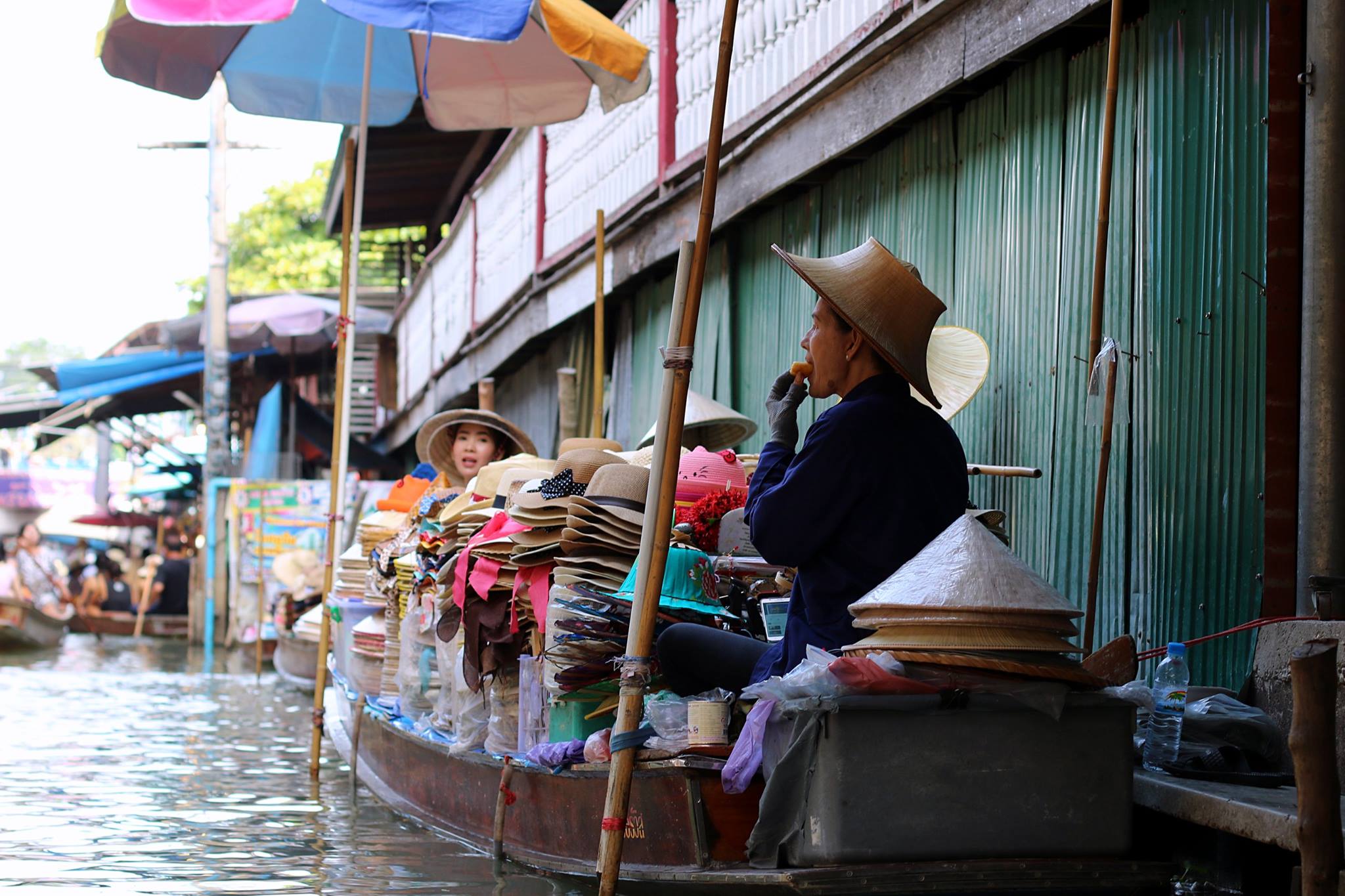
A highlight of my time in Bangkok was visiting one of Thailand’s traditional floating markets—a place that felt like stepping back in time.
These markets date back centuries, when canals were the main transportation routes and boats were used for everything—from commuting to shopping. Even though Bangkok has become a concrete metropolis, places like the Damnoen Saduak Floating Market preserve that heritage, offering a glimpse of how Thai people once lived and traded.
The experience was pure magic. Long-tail boats glided down narrow canals, vendors called out their offerings—fresh fruit, souvenirs, noodles—and the air buzzed with energy and aroma. I floated past a man selling handmade hats, close enough to bargain right from my boat. Bartering is a way of life here.
And then came the moment—Thai coconut ice cream, served in a coconut shell with toasted peanuts and tender strips of coconut meat. Cold, creamy, and lightly sweet… it was hands-down one of the best desserts I’ve had on any trip. That first spoonful was the kind of moment that sticks with you. The sound of the water, the laughter of other travelers, the scent of fresh flowers and grilled food—it was all unforgettable.
Thailand excels at these immersive, multi-sensory experiences that feel both ancient and alive.
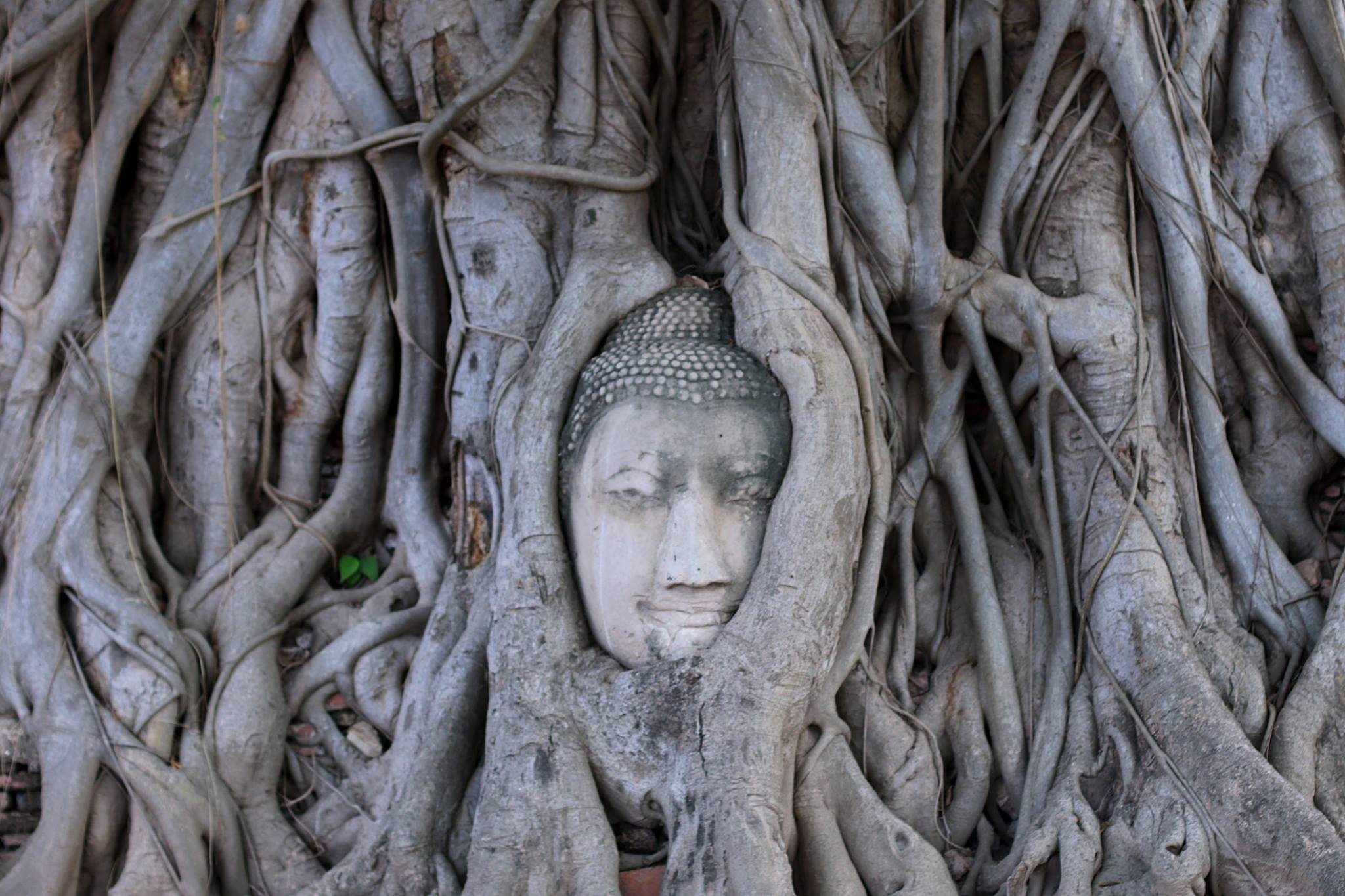
After a long (and slightly off-course) bus ride, I made it to Ayutthaya, the former capital of the Kingdom of Siam. Established in 1350, Ayutthaya was once one of the most powerful cities in Southeast Asia until it was invaded and burned by the Burmese in 1767.
Despite the destruction, what remains is stunning. The Ayutthaya Historical Park, a UNESCO World Heritage Site, is home to towering stupas, crumbling temples, and headless Buddha statues—many of which were beheaded during the Burmese attack.
A highlight was Wat Mahathat, where a Buddha head is famously entwined in tree roots—a powerful visual of resilience and nature reclaiming history. I also visited Wat Phra Si Sanphet, once the grandest temple in the city and model for the Emerald Buddha Temple in Bangkok. Walking through the ruins, I saw statues draped in saffron cloth by modern-day worshippers, blending past and present devotion.
Ayutthaya’s ruins are massive, and many are still explorable on foot or bike. Some even let you climb inside—something that felt both thrilling and eerie. The mix of sacred silence and war-worn scars left a lasting impression.
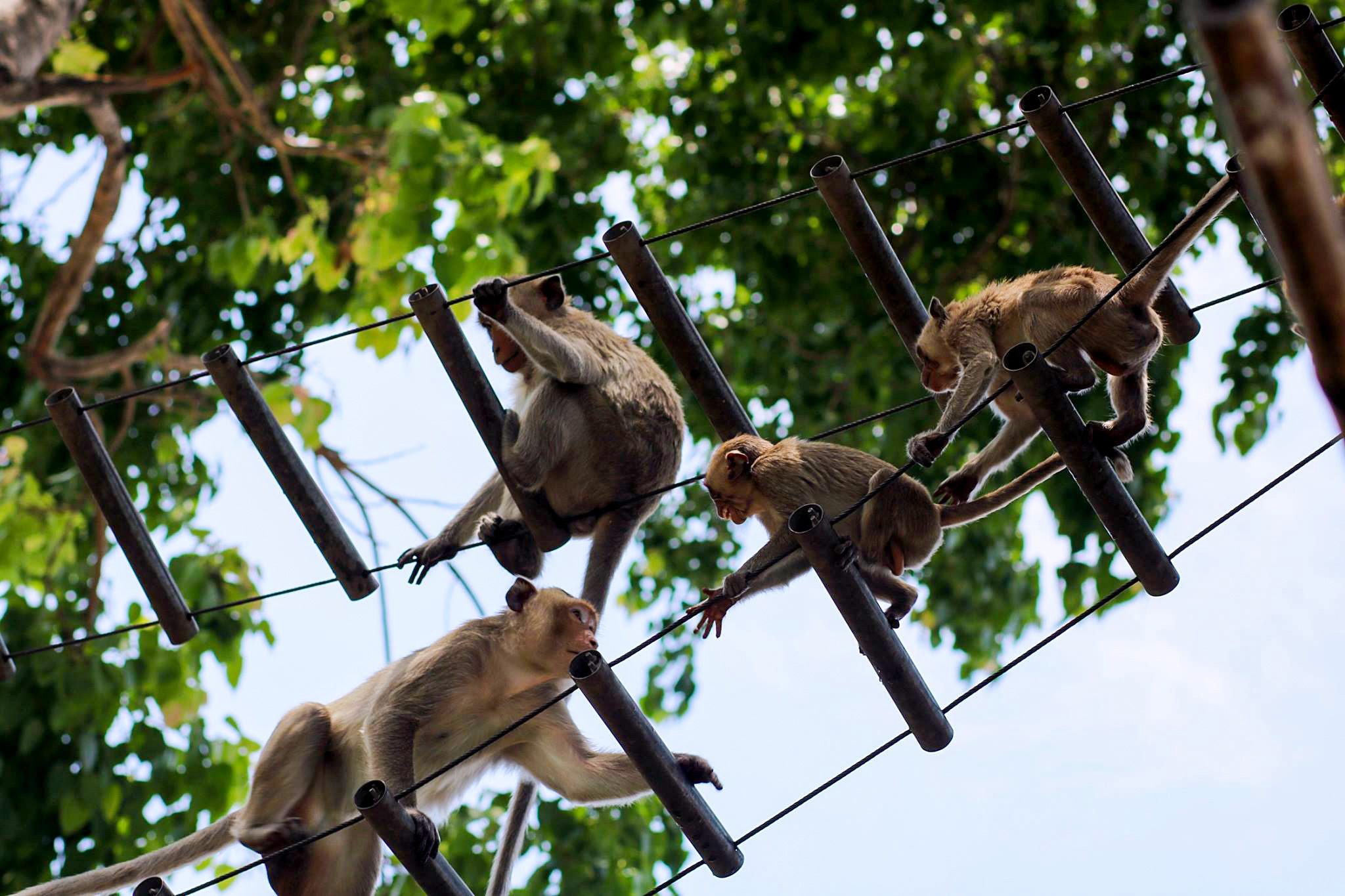
Though not originally on my list, I squeezed in a visit to Lopburi, known for its ancient temples—and its monkeys. Once the second capital after Ayutthaya fell, Lopburi is home to the Prang Sam Yot temple, affectionately nicknamed the “Monkey Temple.”
Here, crab-eating macaques roam freely through the city. The monkeys are seen as guardians of the city, but trust me, they’re not shy. One literally jumped on me while I was posing for a photo. (Screamed. No shame.)
Despite the chaos, the ruins are worth it. I also visited King Narai’s Palace, built in the 17th century during the height of French-Thai relations. The ruins give you a sense of how grand Lopburi once was—before the monkeys took over.
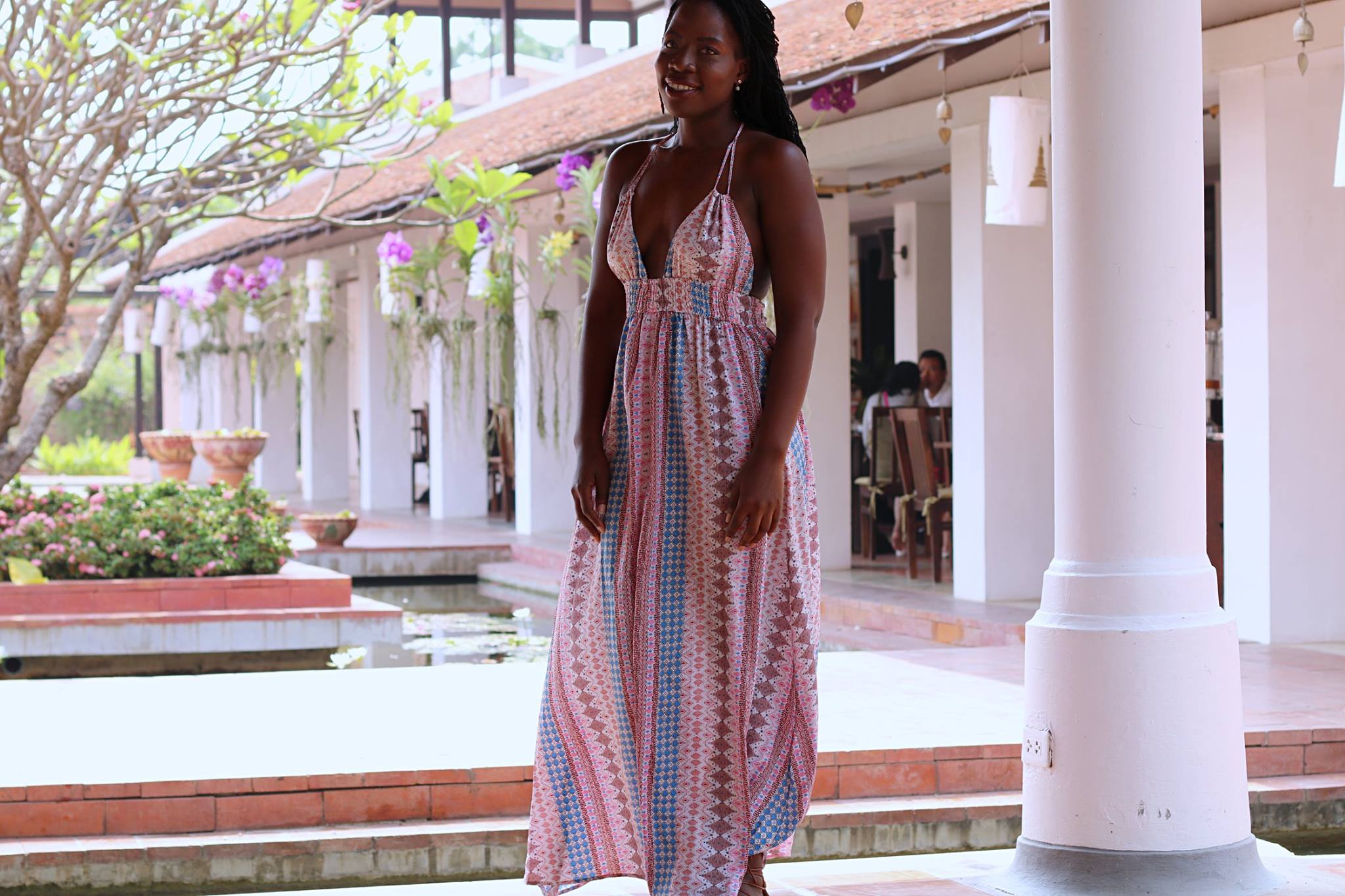
After days filled with ruins and monkeys, Phitsanulok offered a quieter pace. This central city is often a stopover for travelers heading to Sukhothai, but it’s not without its own charm. It’s home to Wat Phra Si Rattana Mahathat, which houses one of the most revered Buddha images in Thailand—the Phra Buddha Chinnarat.
I used my time here to rest and reset before heading to the birthplace of the Thai nation.

If Ayutthaya was the fallen kingdom, Sukhothai was the first light. The name literally means “Dawn of Happiness”, and it’s here that Thai identity as we know it began. The Sukhothai Kingdom (13th–15th century) is considered the cradle of Thai art, language, and governance.
The Sukhothai Historical Park is vast—so I rented a bike and stuck mostly to the Central Zone, where grand Buddha statues, lotus ponds, and red brick temples filled the landscape. It’s easy to see how Thailand’s modern architecture and religious traditions trace back here.
The park felt different from Ayutthaya. Less crowded, more preserved. Like a glimpse into what could have been if war hadn’t erased so much of Ayutthaya’s legacy. And the lotus flowers everywhere? A symbol of purity and rebirth in Buddhism. It felt fitting for this part of the trip.
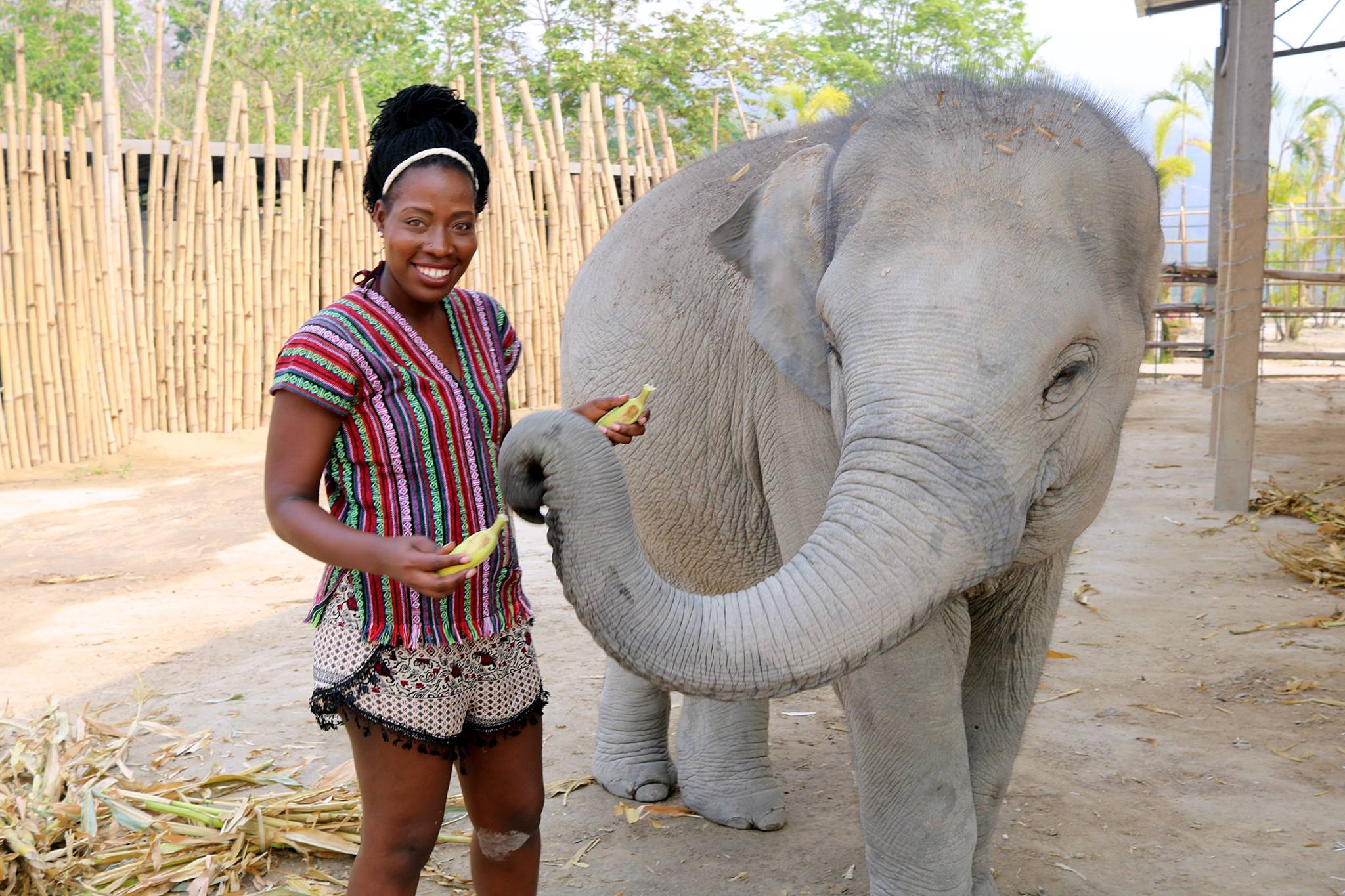
I ended up in Chiang Mai, the cultural capital of northern Thailand. While I visited some of its many temples, the real highlight was my trip to a reputable elephant sanctuary. No rides. No shows. Just rescued elephants living freely and being cared for with love.
We wore matching shirts to help the elephants recognize us as safe. I fed them bananas (which earned me a few new friends), gave them a mud bath, and watched them splash around like joyful toddlers. Some bore scars from their past lives in tourism or labor, but here, they were healing.
Important note: Many so-called sanctuaries in Thailand are not ethical. Do your homework before visiting one. The elephants deserve better than our entertainment.
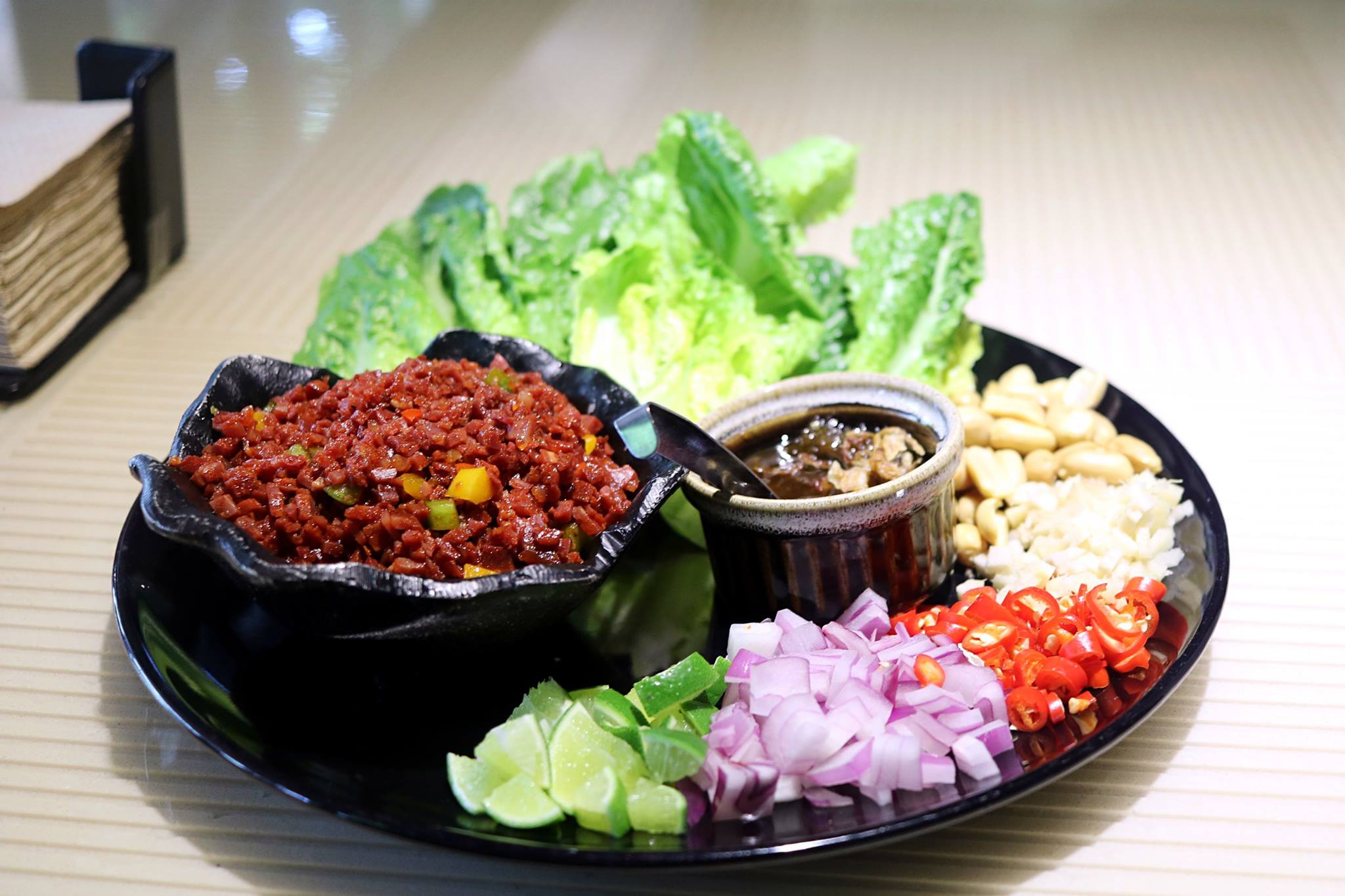
Thai food? Next-level.
I mostly ate street food and small family-run spots—and the flavors were unmatched. Favorites included:
Coconut Ice Cream (Floating Market) – Creamy, nutty, served in a coconut shell with fresh toppings.
Pad Thai & Lettuce Wraps – Simple, balanced, always satisfying.
Red Curry with Egg Fried Rice – Spicy, rich, and unlike the version back home.
Tom Yum Soup – A bold mix of lemongrass, lime, chili, and shrimp that woke up every taste bud.
Watermelon Smoothies – Just fruit and ice, no filler. The perfect heat-beater.
Street food in Thailand isn’t just convenient—it’s an art form.
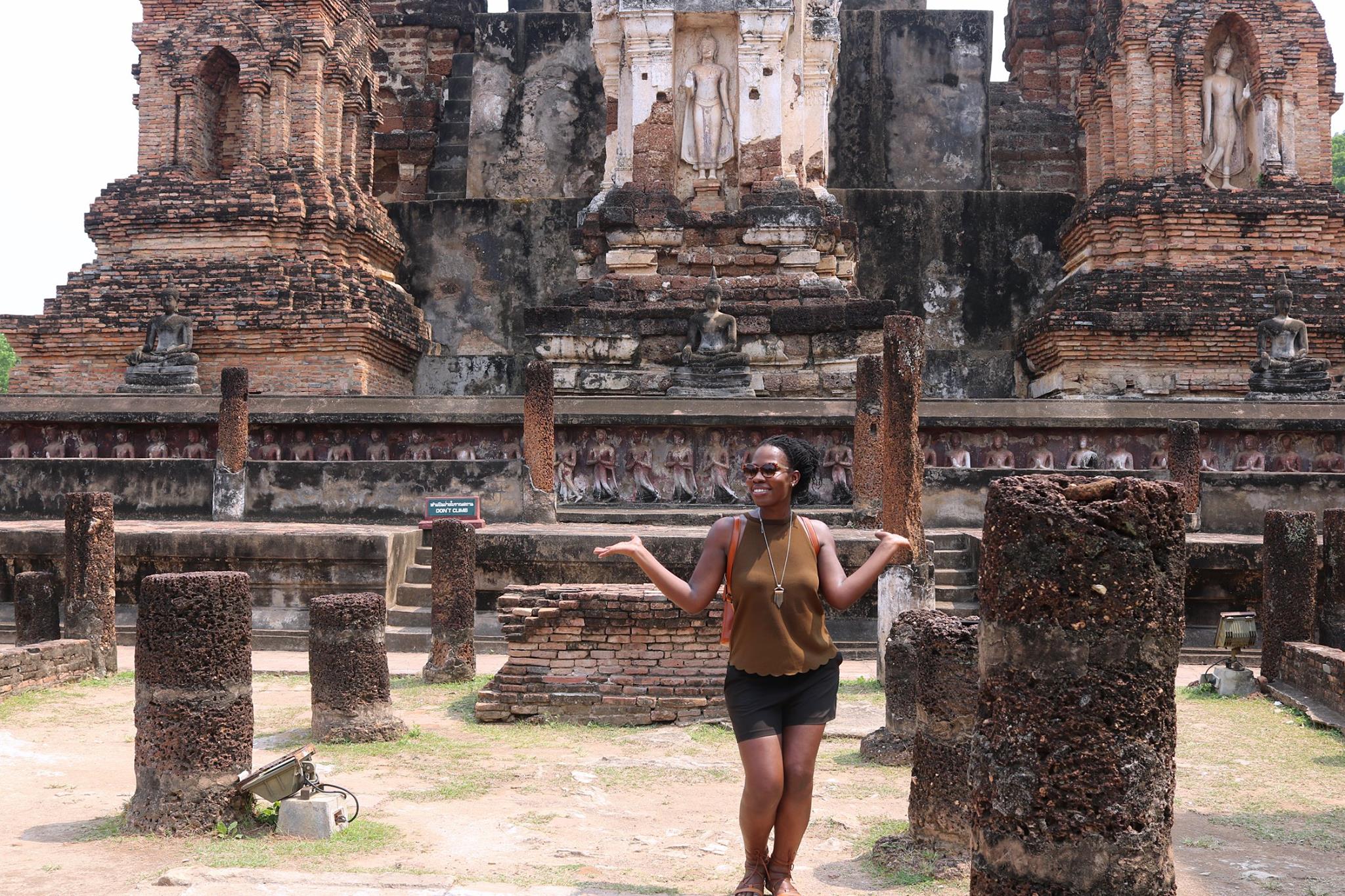
Thailand gave me more than I expected—from spiritual energy and ancient stories to street food and splashy elephant memories. It challenged me (see: monkeys), calmed me (hello, Phitsanulok), and reminded me to keep going—even when I hop on the wrong bus.
This country doesn’t just welcome you—it teaches you. Through its deeply rooted Buddhist traditions, its reverence for ancestors and royalty, and its quiet moments of daily ritual, Thailand reveals how spirituality and everyday life intertwine.
Out of all the places I’ve visited, Thailand is by far one of my most memorable and favorite countries. There’s a warmth here—both from the people and the culture—that just fits me. I wouldn’t mind retiring here one day. And I definitely plan to return to experience the other side of Thailand—the islands, the beaches, and that easygoing southern vibe.
Until then, my passport’s still warming up.
You can download my full Thailand itinerary to help guide your trip—complete with daily stops, food finds, cultural highlights, and more. Or better yet, come with me next time on a curated Travel Invite trip. Friendly faces. No scams. All vibes.

Dubai surprised me. I came for the glam, but left with a deeper appreciation for its culture, contrasts, and quiet moments between the skyscrapers.
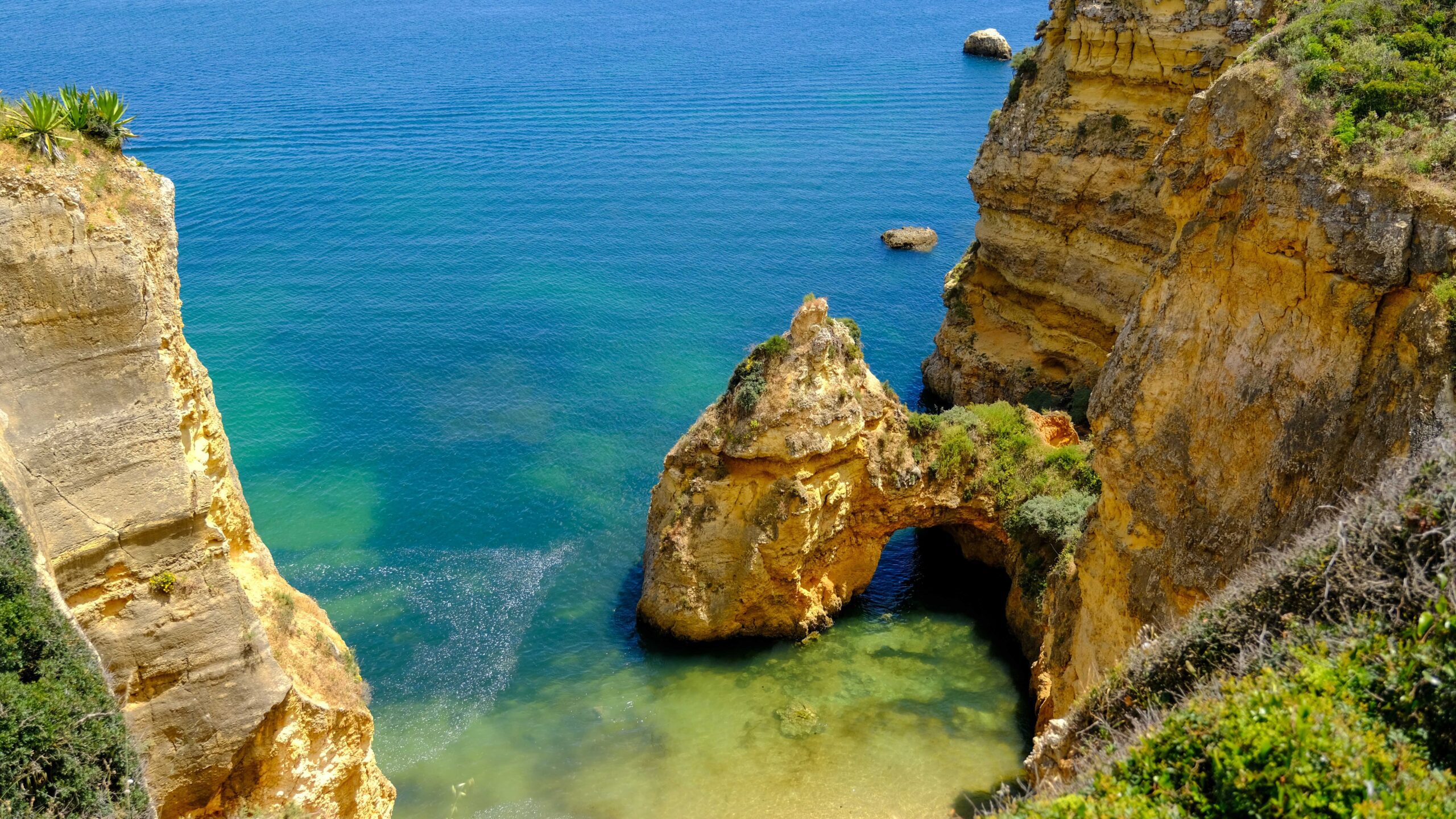
From pastel palace to seaside cliffs—this trip was short, but the memories are staying with me.